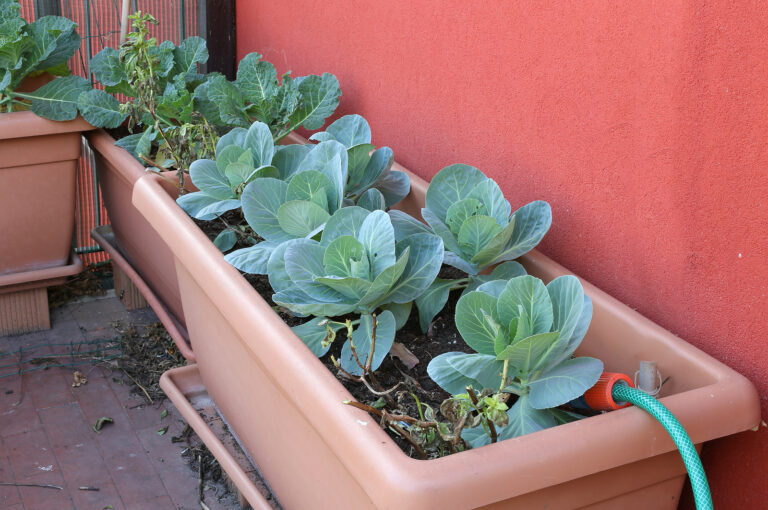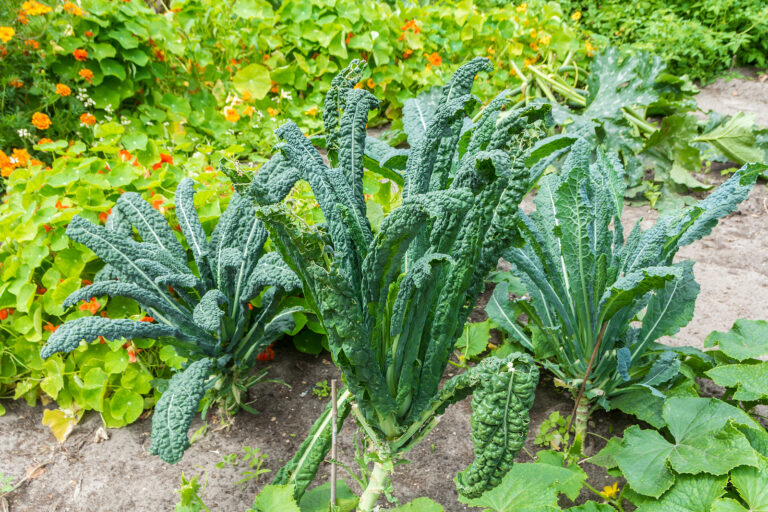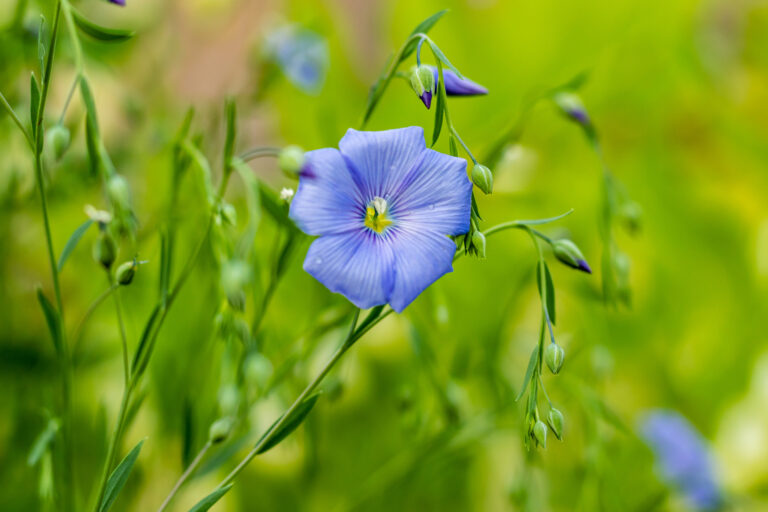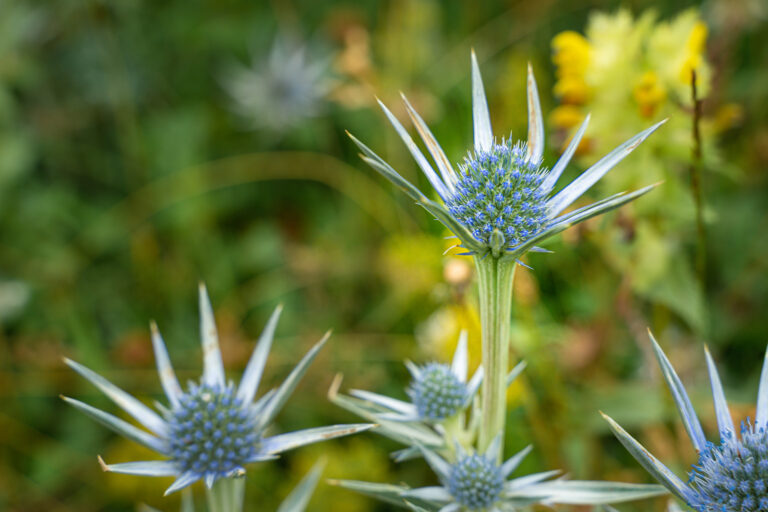How to Plant, Grow, and Harvest Chinese Cabbage
Chinese cabbage is a large group of cabbages that can be divided into two categories–heading and non-heading leafy greens. The heading types include Napa cabbage–also called Hakusai, Michili, celery cabbage, and Pe Tsai. The non-heading types include Bok Choy (also called Pac Choi or Pak Choi) and Mei Qing Choi (sometimes called Baby Bok Choy).
The name Chinese cabbage can lead you to several very different vegetables.
There are dozens of varieties of “Chinese cabbage” each with unique tastes and culinary attributes.
All of the so-called Chinese cabbages belong to the genus Brassica which is a diverse group of vegetables that include cabbage, kale, Brussels sprouts, cauliflower, broccoli, kohlrabi, mustard, rutabaga, and turnips.
Related articles:
- Five Ways to Cook and Serve Chinese Cabbage
- Five Ways to Cook and Serve Bok Choy
- How to Plant, Grow, and Harvest Chinese Cabbage
- 40 Chinese Vegetables to Grow
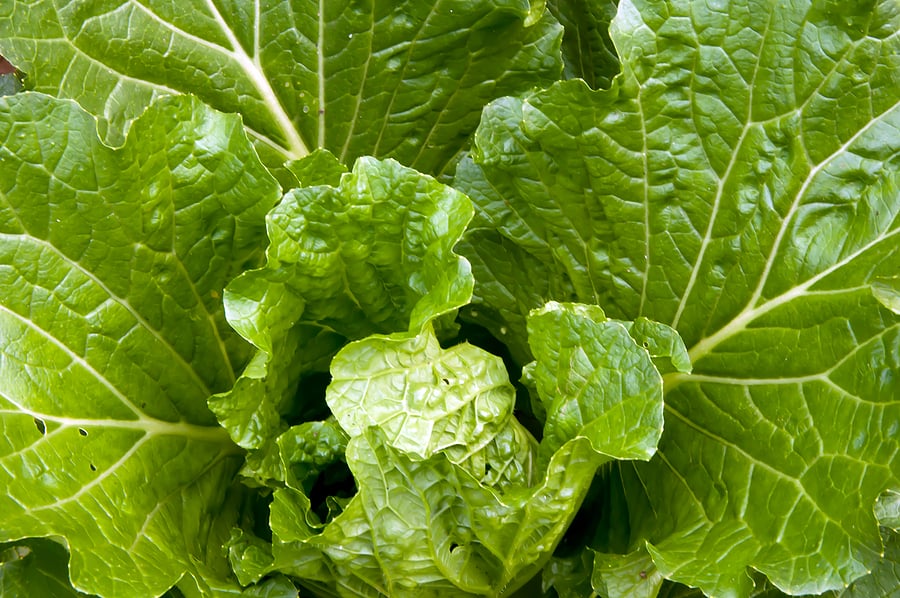
Chinese cabbages are hardy biennials grown as annuals. Most Chinese cabbages–particularly the heading types–require cool growing conditions. Chinese cabbages are best planted in early spring for late spring harvest. For a fall crop, they should be sown after midsummer. Like all cabbages, they should be grown fast and steadily for the best flavor.
Chinese cabbages have broad, thick, tender leaves and heavy midribs. Depending on the variety Chinese cabbages are ready to use about 50 to 70 days after seed sowing. The leaves are often used raw for salad or slaw or steamed, stir-fried, boiled, or included in soups.
The botanical name of the heading types is Brassica pekinensis. The botanical name of the non-heading types is Brassica chinensis.
Chinese cabbage quick growing tips
- Sow Chinese cabbage directly in the garden as early as 4 to 6 weeks before the average last frost date in spring. Direct seed in the home garden as soon as the soil is workable in spring.
- Chinese cabbage must come to harvest in the cool temperatures and shorter days of spring or autumn before temperatures rise above 75°F (24°C).
- Plants require from 50 to 85 days to come to harvest depending upon the variety.
- Chinese cabbage yield: grow 6 to 8 plants per household member and grow cut-and-come-again.
Types of Chinese cabbage
The Brassica variety pekinensis is commonly referred to as Chinese leaves, celery cabbage, and in the United States Napa cabbage. There are three general types of cabbages in the Pekinensis group: the “tall cylindrical,” the “hearted’ or “barrel-shaped,” and the “loose-headed.”
The tall cylindrical type has long, upright leaves that form a tapering head. These varieties are generally referred to as “Michihili,” the name of one popular tall cylindrical variety.
The hearted type has compact, barrel-shaped heads with tightly wrapped leaves and a dense heart. These are commonly referred to as wong bok or Napa cabbage.
The loose- or open-headed type has a lax or floppy demeanor and textured leaves. These are also known as pei tsai.
Names common to these three types include Chinese leaves, celery cabbage, Chinese celery cabbage, Napa, nappa, pe-tsai, wong bok cabbage, wong nga bok, Peking cabbage, Tientsin or Tianjin cabbage, bai cai, chih-li, shantung cabbage, hakusai, chihli cabbage, Michihli, Chinese leaf, and chou de Chine.
Chinese leaves can be eaten raw in salads for their mild flavor and crunchy texture or used in stir-fries, stews, or soups.
There are two types of Chinese cabbage, loosehead, similar to loose-leaf lettuce, and heading or tighthead.
Nonheading loosehead Chinese cabbages
- Loosehead Chinese cabbages include pac choi, also called bok choy, and pei tsai. Pac choi and pei tsai have open, loose heads or rosettes of usually dark green leaves with white celery-like stalks. These are heat-tolerant but will bolt if the weather turns from chilly to very warm Plant these at 2 to 3-week intervals for a continuous harvest. Loosehead types can be harvested a few stalks at a time, cut-and-come-again.
Heading Chinese cabbages
- Heading types include Michihili and Napa; Michihili has a tall cylindrical or tapered head while the Napa is a short barrel-shaped head. These can be grown like cabbage, though they are mild-flavored, unlike cabbage. When these heads are trimmed they reveal compact heads. The entire head to cut at harvest time.
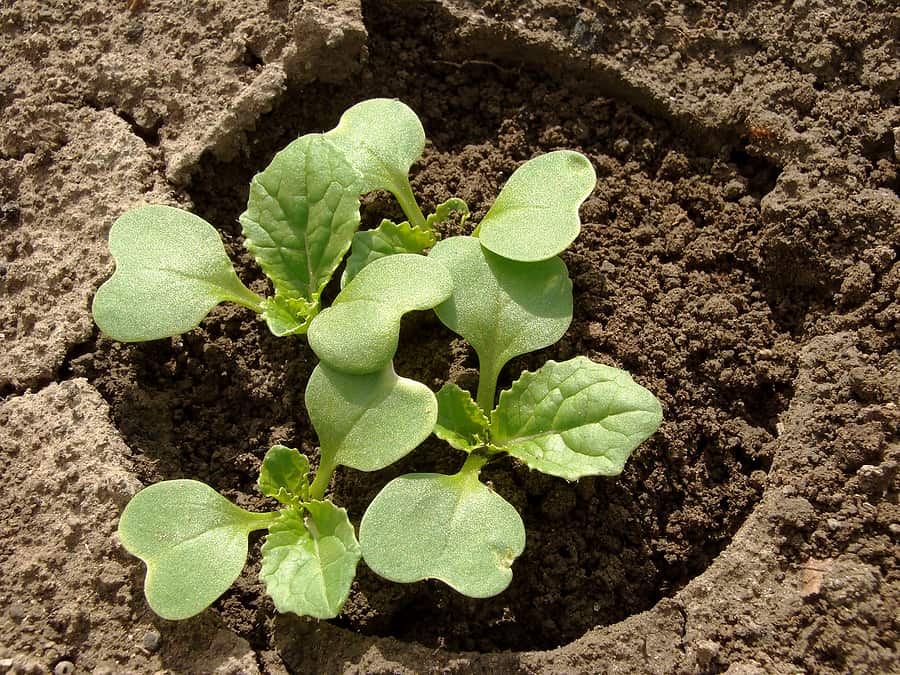
About bok choy
The Brassica variety chinensis is known as bok choy or pak choi. Bok choy can be long-stemmed, thick-stemmed, short, fat, flowering, green- or white-stalked. Its leaves are upright—not rounded–on stalks similar to Swiss chard.
Bok choy or pak choi, the Cantonese variation of the name, is also called Chinese cabbage, baak choi, pak tsoi, petsay, Chinese white cabbage, Chinese mustard cabbage, Chinese chard, white celery mustard, and taisai. Cultivars of bok choy include Shanghai choy, choy sum, bok choy sum, and tat soi.
Bok choy can be eaten raw—the leaves are succulent and tasty and the stems are juicy and crunchy. You can cook bok choy in stir-fries and soups. Thinly slice the ribbed stems or cut them into squares and cook them briefly.
The leaves of bok choy are mostly water so it’s best to cook the leaves separate from the stems. The stems will take longer to cook.
About Napa cabbage
Napa Cabbage or Chinese cabbage which the Chinese call Petsai and the French call Pé tsai is a milder and sweeter alternative to the green cabbage. The word “napa” is a Japanese colloquial word for any leafy vegetable used as a food.
The Napa Cabbage has an oblong head with leaves that are flat and wide. It resembles a head of Romaine lettuce. Because the leaves are thinner than the waxy leaves of round-headed cabbage, this vegetable is more delicate in both look and taste.
Because of its delicate taste, the Chinese cabbage is a good choice for wrapping fish that you plan to steam or for lining the bottom of a bamboo steamer basket. Its sweet flavor will not distract from other vegetables, fish, or poultry that you steam.
About Michihili
Michihili is a semi-heading, upright, cylindrical-shaped Chinese cabbage. Michihili is delicate, crisp, and lightly sweet. It is often used in cooking as a vehicle for the flavors of other foods.
There are other semi-heading Chinese cabbages. Each of these is wrapped with long leaves that form a tapering head. Some varieties can grow up to 24 inches (60 cm) tall.
Michihili is a cultivar name. Michihili is so popular that the class of cylindrical, semi-heading Chinese cabbages is sometimes referred to as Michihili.
The tall cylindrical heads of these vegetables are creamy at the base to light green to deep green at the leaf tips. The leaves have a crinkled or savoy texture with white veining and each leaf has a prominent white midrib that broadens at the base to as much as 4 inches (10 cm) wide.
Where to plant Chinese cabbage
- Grow Chinese cabbage in full sun in cool regions and in partial shade in warm regions.
- Plant Chinese cabbage in well-worked, well-drained but moisture-retentive soil rich in organic matter.
- Add aged compost to planting beds before planting and side-dress crops with compost again at midseason.
- Chinese cabbage prefers a soil pH of 6.5 to 7.5.
Chinese cabbage planting time
- Chinese cabbage is a cool-weather plant that will bolt and go to seed quickly in warm weather and long days; grow Chinese cabbage in spring or autumn in temperatures range of 45° to 75°F (7-24°C). The best time to plant and grow Chinese cabbage is in the cool months of the growing season.
- Sow seed 4 to 6 weeks before the average date of the last frost in spring for a late spring crop.
- Germination will occur in 4 to 19 days at 75°F.
- Sow seed directly in the garden; young seedlings started indoors and transplanted into the garden may be shocked into bolting to seed. Protect young plants until they have adapted to outdoor temperatures. Use row covers to protect seedlings from light frosts.
- In mild winter regions, plant Chinese cabbage in late summer or autumn for late autumn or early winter harvest.
Planting and spacing Chinese cabbage
- Sow Chinese cabbage seeds ½ inch deep and 4 inches (10cm) apart.
- Thin successful seedlings from 12 to 18 inches (30-45cm) apart.
- Space rows 18 to 30 inches (45-76cm) apart depending upon the variety.
- Chinese cabbage does not transplant well.
- Seedlings started indoors should be started in biodegradable peat or paper pots easily set in the garden.
Chinese cabbage companion plants
- Plant Chinese cabbage with cabbage, cauliflower, and Brussels sprouts.
- Do not plant Chinese cabbage with tomatoes, peppers, okra, or potatoes.
Chinese cabbage container growing
- Chinese cabbage can be grown in containers at least 8 inches (20cm) across.
- Plant Chinese cabbage in 10-inch (25cm) centers in larger containers.
- Plants are sensitive to heat so move them into the shade when the weather warms.
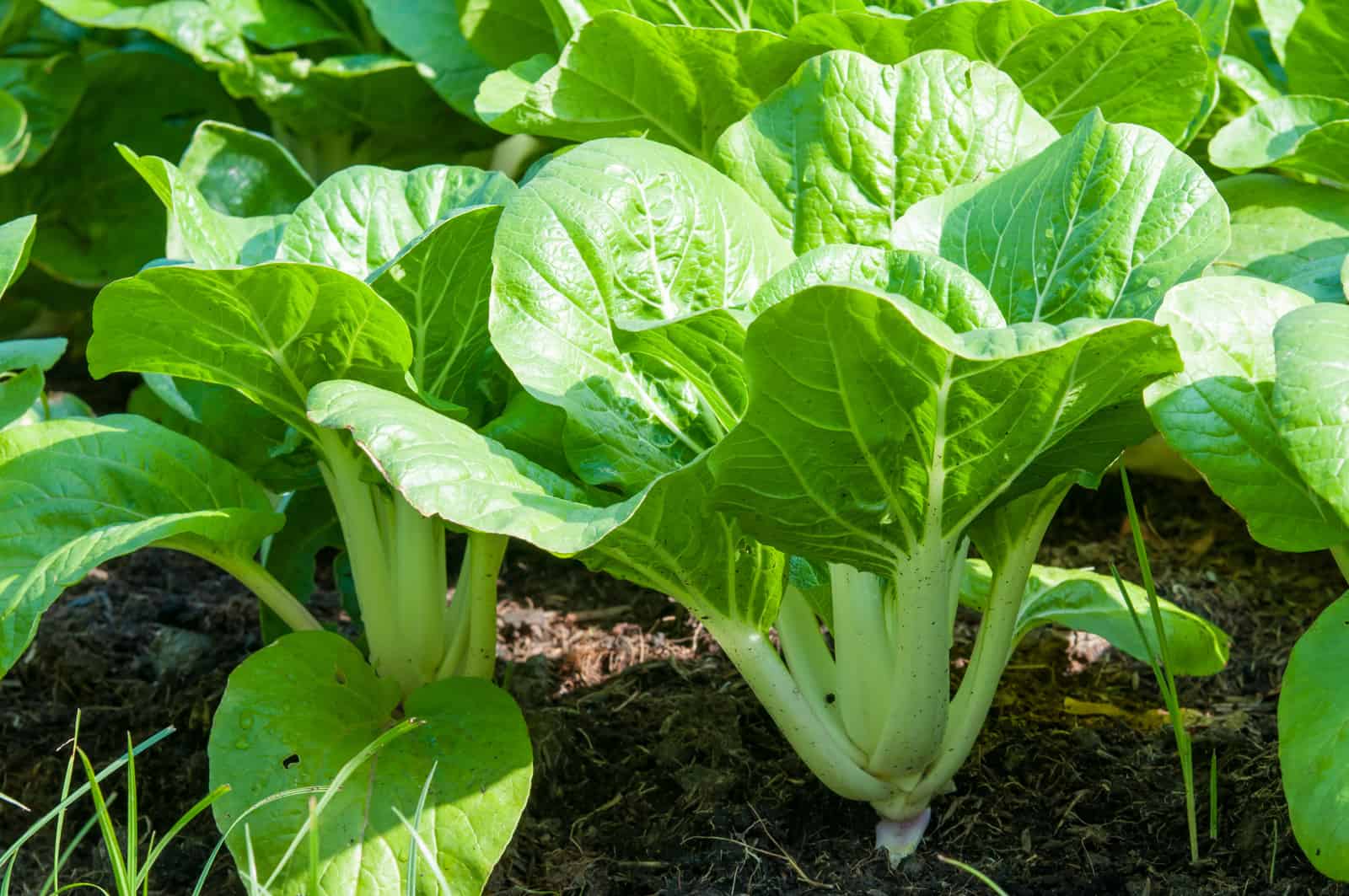
Watering Chinese cabbage
- Chinese cabbage grows best in lightly moist soil.
- Keep soil evenly moist so that plants grow fast and stay tender.
- Slow growth can result in plants going to seed.
Feeding Chinese cabbage
- Chinese cabbages usually don’t need fertilizer. You can side-dress them with compost or spray them with a solution of fish emulsion.
- Apply an all-purpose organic liquid fertilizer during the growing season.
Chinese cabbage care
- Keep plants cool when the weather warms; do not let Chinese cabbage sit in the direct sun for more than 8 hours each day. In hot weather protect Chinese cabbage plants under shade cloth or a slatted wooden clover.
- Mulch around Chinese cabbage with grass clippings, pine needs, or compost to conserve soil moisture and keep down weeds.
Chinese cabbage pests
- Chinese cabbage can be attacked by the same pests that arrack other cabbage family crops: flea beetles, aphids, cabbage worms, and cabbage loopers — caterpillars.
- Aphids can be handpicked or hosed off. Cabbage worms can be controlled by spraying Bacillus thuringiensis.
Chinese cabbage diseases
- Chinese cabbage is susceptible to downy mildew, yellow virus, clubroot (which attacks the roots of the plant), black rot, and leaf spot.
- Plant disease-resistant varieties.
- Avoid handling Chinese cabbage plants when wet. Avoid overhead watering and constantly wet garden soil which can result in cabbage root rot. To avoid root diseases, add organic amendments to clay soil.
- Remove and destroy infected plants.
- Crop rotation is important; avoid planting cabbage family crops in the same place from one year to the next.
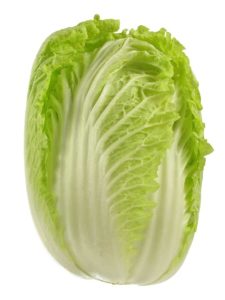
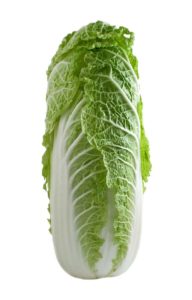
Harvesting Chinese cabbage
- Cut whole heads at soil level when they are compact and firm and before seed stalks form usually 50 to 80 after sowing.
- Complete the harvest before the arrival of freezing weather. If the first fall frost arrives before heads form, Chinese cabbage can still be harvested for greens.
- Young leaves have the most subtle flavor.
Chinese cabbage kitchen use
- Chinese cabbage leaves can be steamed, boiled, quickly stir-fried, or eaten raw.
- Cook leaves and stalks add flavor to soups, stews, pasta salads, and stir-fries. Chinese cabbage leaves can be used in dumplings and kimchi. (Kimchi is a traditional Korean side dish of salted or fermented vegetables, including napa cabbage.)
- Chinese cabbage leaves can be used as a substitute for regular cabbage in salads.
Storing Chinese cabbage
- Chinese Cabbage Chinese cabbage will keep in the vegetable compartment of the refrigerator for about 4 weeks.
- Chinese cabbage can be stored in a root cellar at about 34° to 36°F for two to six months.
- Chinese cabbage can be blanched and frozen for 3 to 4 months.
Chinese cabbage varieties and cultivars to grow
- Pac Choi (Bok Choy): ‘Joi Choi’, ‘Black Summer’, ‘Mei Qing Choi’, ‘Li Ren Choi’, ‘Win-Win Choi’, ‘Rosie’, ‘Red Pac’, ‘Green Pac’.
- Heading types (Michihili and Napa): ‘Jade Pagoda’, ‘Minuet’, ‘Monument’, ‘Rubicon’, ‘Bilko’, ‘Red Dragon’, ‘Tokyo Bekana’.
About Chinese cabbage
- Common name. Chinese cabbage, white cabbage, flowering cabbage, celery cabbage, pakchoi, Michihli, Napa cabbage
- Botanical name. Brassica rapa subsp. pekinensis
- Family: Brassicaceae (Cruciferae) cabbage family
- Origin. China
Napa Cabbage Learning Hub
Start here: The Ultimate Guide to Growing Napa Cabbage
Napa Cabbage Planting & Timing
- When to Plant Napa Cabbage in Spring and Fall
- Napa Cabbage Planting Calendar: Month-by-Month Guide
- Best Soil and Site Conditions for Napa Cabbage
Napa Cabbage Starting & Transplanting
- How to Start Napa Cabbage Indoors Under Lights
- Direct Seeding vs. Transplanting Napa Cabbage: Pros and Cons
- How to Harden Off and Transplant Napa Cabbage for Strong Growth
Napa Cabbage Care
- Watering Napa Cabbage: How Much and How Often
- How to Fertilize Napa Cabbage for Big, Tight Heads
- Protecting Napa Cabbage from Heat, Bolting, and Sun Stress
Pests & Diseases
Harvest & Storage
- How to Harvest Napa Cabbage Without Splitting or Cracking
- Storing Napa Cabbage for Weeks: Simple Home Preservation Tips
Containers & Small Spaces
Varieties
- Best Napa Cabbage Varieties for Home Gardeners
- Short-Season Napa Cabbage Varieties for Cool Climates
Companion Planting
Bok Choy Learning Hub
Start here: The Ultimate Guide to Growing Bok Choy
Bok Choy Planting & Timing
- When to Plant Bok Choy for Spring, Summer, and Fall
- Bok Choy Planting Calendar: Month-by-Month Guide
- Best Growing Conditions for Tender, Bolt-Resistant Bok Choy
Starting, Transplanting & Direct Sowing
- How to Start Bok Choy Indoors Under Lights
- Direct Sowing Bok Choy for Fast, Tender Harvests
- How to Transplant Bok Choy Without Triggering Bolting
Bok Choy Care
- Watering Bok Choy: Keeping Plants Tender and Not Tough
- How to Fertilize Bok Choy for Fast, Leafy Growth
- How to Prevent Bok Choy from Bolting (Heat, Stress & Day Length)
Pests & Diseases
Harvest & Storage
Containers & Small Spaces
Varieties
- Best Bok Choy Varieties for Home Gardeners
- Baby Bok Choy Varieties for Fast, Tender Yields
- Heat-Tolerant and Bolt-Resistant Bok Choy Varieties
Companion Planting
Cabbage Learning Hub
🥬 Start Here: The Ultimate Cabbage Growing Guide: From Seed to Harvest
🌿 Planting & Timing
- Cabbage Seed Starting Tips
- When to Plant Cabbage: Timing for Spring, Summer, and Fall Crops
Covers zone-based timing, transplant vs. direct sow. - How to Grow Spring Cabbage for Early Harvests
“Spring cabbage growing” – high seasonal interest. - How to Grow Cabbage in Containers: A Complete Guide
Perfect for urban/small-space gardeners. Include spacing, soil depth, and feeding. - How to Space and Thin Cabbage for Tight, Heavy Heads
Spacing is a common problem leading to poor heads or bolting.
How to Plant, Grow, and Harvest Chinese Cabbage
🦟 Pests, Diseases & Troubleshooting
- Common Cabbage Pests and How to Get Rid of Them Naturally
Aphids, cabbage worms, flea beetles, cutworms. - Why Is My Cabbage Splitting? Causes and Fixes for Cracked Heads
Very specific problem; here’s why this happens. - How to Prevent Bolting in Cabbage and Other Brassicas
Seasonal temperature swings confuse many gardeners.
💧 Care & Growing Tips
- How Much Water Does Cabbage Need? A Seasonal Watering Guide
“How often to water cabbage” queries are common. - How to Fertilize Cabbage for Leaf Growth and Head Formation
Discuss starter fertilizer, side-dressing, nitrogen balance.
What to plant with cabbage. - Common Cabbage Pests and Diseases and How to Treat Them Naturally
🧊 Harvesting, Storage & Preservation
- How to Harvest and Store Cabbage
- How and When to Harvest Cabbage for Peak Flavor and Texture
Includes signs of readiness and how to cut heads without damagin - Best Companion Plants for Cabbage (And What to Avoid)g the plant.
🥗 In the Kitchen & Beyond
- Seven Ways to Cook and Serve Cabbage
- Five Ways to Cook and Serve Chinese Cabbage
- Four Ways to Cook and Serve Napa Cabbage
🌱 Varieties & Seed Saving
- Best Cabbage Varieties for Your Climate and Growing Zone
Optimized for zone-specific growing.
- Savoy, Napa, and Red: Which Type of Cabbage Should You Grow?
Comparative format — helpful for new gardeners. - Growing Green Cabbage vs. Red Cabbage: The Differences
- Oriental Mustard Cabbage Explained: White Stalks vs. Green Stalks
Related articles:
How to Plant, Grow, and Harvest Chinese Cabbage
Five Ways to Cook and Serve Chinese Cabbage
Four Ways to Cook and Serve Napa Cabbage
Five Ways to Cook and Serve Bok Choy
How to Plant, Plant, Grow, and Harvest Mizuna
Ways to Prepare and Serve Mizuna
How to Cook and Serve Bitter Melon
More how to grow articles:
Learn how to plant, grow, and harvest your favorite vegetables. Click below for all you need to know.
- Artichoke
- Arugula
- Asparagus
- Beans, Snap
- Beets
- Broad Beans
- Broccoli
- Brussels Sprouts
- Cabbage
- Cantaloupe — Melons
- Cardoon
- Carrots
- Cauliflower
- Celeriac
- Celery
- Chard
- Chayote Squash
- Chickpeas
- Chicory
- Chinese Cabbage
- Collards
- Corn Salad
- Corn, Sweet
- Cresses
- Cucumbers
- Eggplant
- Endive and Escarole
- Fava Beans
- Florence Fennel
- Garbanzo Beans
- Garlic
- Horseradish
- Jerusalem Artichoke
- Kale
- Kohlrabi
- Leeks
- Lettuce
- Lima Beans
- Melons
- Mizuna
- Mustard Greens
- New Zealand Spinach
- Okra
- Onions
- Parsnips
- Peanuts
- Peas
- Peppers
- Potatoes
- Pumpkins
- Radicchio
- Radishes
- Rhubarb
- Rutabaga
- Salsify
- Shallots
- Sorrel
- Southern Peas
- Soybeans
- Spinach
- Squash, Summer
- Squash, Winter
- Sunchokes
- Sweet Potato
- Swiss Chard
- Taro
- Tomatillo
- Tomatoes
- Turnips
- Watermelon
- Zucchini
Grow 80 vegetables: KITCHEN GARDEN GROWERS’ GUIDE
Garden Planning Books at Amazon:


